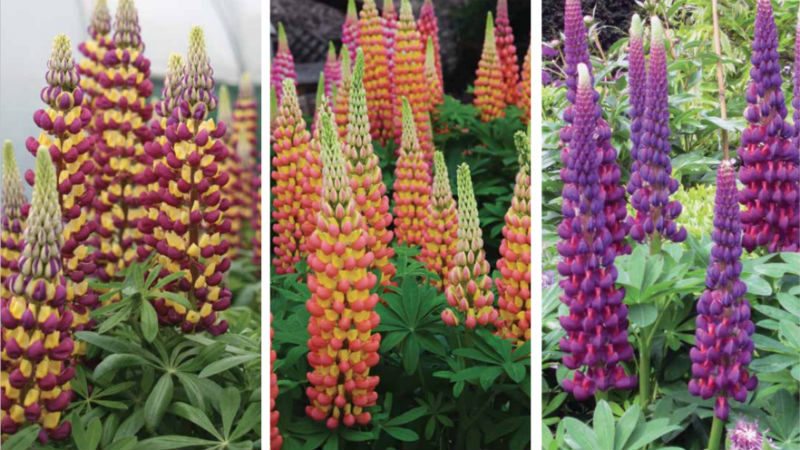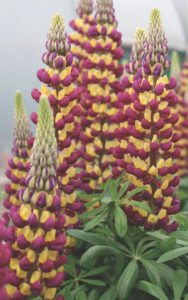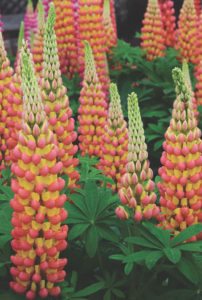
Culture Report: Lupine Westcountry Series
The remarkable genus Lupinus is found to be native to all 50 U.S. states. Growers and gardeners across the country are very familiar with lupine; it is rare to find a person that does not love the tall spires of flowers that can be found in solid and bicolor patterns. Most people associate lupine with the series produced from seed; but in comparison to those, the Westcountry varieties are like lupines on steroids. These aren’t your grandmother’s lupines!
 The Westcountry varieties, collected by Westcountry Nurseries in the United Kingdom, have been selected for their unique vibrant colors. Propagated by tissue culture, the distinctive bloom patterns have been preserved through the process, and the overall plant strength has been increased. As you may well know, supply on crops propagated from tissue culture can sometimes be unreliable; the issue surrounding the Westcountry lupines has always been supply. Finally, thanks to a dependable tissue culture source in the United States, Gulley Greenhouse has the series available as liners in large quantities for summer/fall of 2017!
The Westcountry varieties, collected by Westcountry Nurseries in the United Kingdom, have been selected for their unique vibrant colors. Propagated by tissue culture, the distinctive bloom patterns have been preserved through the process, and the overall plant strength has been increased. As you may well know, supply on crops propagated from tissue culture can sometimes be unreliable; the issue surrounding the Westcountry lupines has always been supply. Finally, thanks to a dependable tissue culture source in the United States, Gulley Greenhouse has the series available as liners in large quantities for summer/fall of 2017!
There are seven spectacular colors available for the 2017/18 season: Blacksmith (purple/white), Desert Sun (clear yellow), Gladiator (orange/yellow), Masterpiece (wine purple), Manhattan Lights (yellow/purple), Persian Slipper (periwinkle blue/white) and Red Rum (clear red).
Production Guidelines
Container size. These plants are extra large with 24- to 36-inch flower spikes, and should be featured in a large premium container (2-gallon and larger). Although they are a hardy perennial to zone 5, this series will shine as a pot crop with a huge impact on display at retail. The massive display of flowers will also support a much higher price point than normal lupine varieties.

Crop timing. Plant one 72-cell liner in a 2-gallon pot in late summer to early fall. Westcountry lupine create the biggest display when bulked through the fall and winter months and allowed to bloom with the natural spring season of the location they’re grown at. Liner availability is based on this schedule, so the majority of plants will be timed for shipping from July to October. Westcountry lupine also can be planted into finished containers from larger cooled liners (32-cell) in the spring, but the key is bulking. The larger the root system and the more crowns above the soil, the more flower spikes that will bloom in the spring.
Temperature and light. When actively growing or bulking, maintain night temperatures of 45° F or higher. When the plants are well rooted and the foliage reaches the edge of the finished container, cool the temperatures down to 25 to 30° F nights. Lupine love cold, but it is also best to keep the crop above 20° F where plants will start to go completely dormant. Lupine bloom with a combination of light and temperature. It is possible to force them into flower with artificial light, but make sure the plants are large enough before adding the lighting. This series does not require vernalization to bloom, but the more time given to bulk at cool temperatures, the more impressive the flower display will be. The Westcountry series will do best grown in full sun to part- shade conditions.
Pinching and PGRs. Do not pinch the new growth (crown) at the center of the plant. It is best to control plant growth with temperature. Cool them down to slow them down, warm them up to speed them up! Lupines respond very quickly to increases or decreases in temperature. A uniconazole PGR spray can also be applied to help maintain desired height.

Media, irrigation and fertilization. Soil media in the finished pot needs to be porous, with excellent drainage. Maintain a pH on the acidic side, but not lower than 5.5. Apply liquid feed at 100-ppm nitrogen during the bulking stage, but make sure the fertilizer used is low in phosphorus. Plants can be grown evenly moist but not wet. Be very careful about watering if the plants are kept on the colder side; though the plants will require some supplemental water, avoid over- watering as crown rot is possible.
Pests and diseases. After potting into the final container, apply a preventative fungicide drench. Other diseases that could be an issue such as Anthracnose and powdery mildew can easily be controlled with a fungicide spray. Clean up any dead leaves to prevent rot and disease issues. Insects that affect lupines include Aphids and Leaf Miner.
Scouting for any issues along with a preventative drench and spray program should help prevent most pest infestations and diseases.
Please note, these are general production guidelines and may vary depending on specific regions and greenhouse facilities.


 Video Library
Video Library 




















